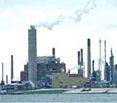World Bank projects India's growth at over 6% in 2014-15
15 Jan 2014
The World Bank has projected India's economy to grow over 6 per cent in 2014-15 and 7.1 per cent by 2016-17, as global demand recovers and domestic investments increase.
 ''India's growth is projected to rise to over 6 per cent in FY2014-15, increasing to 7.1 per cent by FY2016-17,'' the World Bank said in its Global Economic Prospects (GEP) report released today.
''India's growth is projected to rise to over 6 per cent in FY2014-15, increasing to 7.1 per cent by FY2016-17,'' the World Bank said in its Global Economic Prospects (GEP) report released today.
"India's growth is projected to be just over 6 per cent in FY2014-15, rising to 6.6 per cent in FY2015-16 and 7.1 per cent in FY2016-17," the World Bank said. "Growth in India will be led by recovery in global demand and an increase in domestic investment, subject to downside risks."
The multilateral funding agency, however, said that much will depend on the fiscal policy reform remaining on course.
The World Bank projects global GDP growth to firm up to 3.2 per cent this year from 2.4 per cent in 2013, stabilising at 3.4 per cent and 3.5 per cent in 2015 and 2016, respectively.
The report estimates China's economy staying flat at 7.7 per cent in 2014 and slowing to 7.5 per cent in the next two years, by which time the World Bank expects foreign investors to deleverage and rely less on policy-induced investment.
Pakistan's growth is expected to moderate slightly to 3.4 per cent in FY2013-14, reflecting necessary fiscal tightening, and then rise to 4.5 per cent in the medium term, it said.
With the global economy growing at an increased pace this year, growth will also pick up in developing countries while the high-income economies appear to be finally turning the corner five years after the global financial crisis.
According to the report, in South Asia, weaker growth in India, following several years of rising inflation and current account deficits, has opened up a large negative output gap, which is projected to gradually close as the economy slowly recovers.
Better Indian performance will be heavily reflected in the region's growth, which is expected to strengthen to 5.7 per cent in 2014 and about 6.7 per cent in 2016, it said.
The World Bank projects global GDP to increase from 2.4 per cent in 2013 to 3.2 per cent this year, stabilizing at 3.4 per cent and 3.5 per cent in 2015 and 2016, respectively, with much of the initial acceleration reflecting a pick-up in high-income economies.
"Growth appears to be strengthening in both high-income and developing countries, but downside risks continue to threaten the global economic recovery," said World Bank Group President Jim Yong Kim.
"The performance of advanced economies is gaining momentum and this should support stronger growth in developing countries in the months ahead. Still, to accelerate poverty reduction, developing nations will need to adopt structural reforms that promote job creation, strengthen financial systems and shore up social safety nets," he said.
According to the report, in South Asia, weaker growth in India, following several years of rising inflation and current account deficits, has opened up a large negative output gap, which is projected to gradually close as the economy slowly recovers.
Better Indian performance will be heavily reflected in the region's growth, which is expected to strengthen to 5.7 percent in 2014 and about 6.7 percent in 2016, it said.
Growth in South Asia remained subdued, mainly due to weakness in the Indian economy, World Bank said in its report on India.
Southeast Asian economies are expected to be recovering toward the end of 2013, and regional GDP on a calendar-year basis is projected to slowly accelerate to about 6.7 per cent in 2016, mainly reflecting stronger growth in India and a cyclical recovery in investment and external demand, it said.
While the global economic indicators show improvement, dangers lurk beneath the surface, said, Kaushik Basu, chief economist and senior vice president at the World Bank, adding that the euro area is out of recession but per capita incomes are still declining in several countries.
"We expect developing country growth to rise above 5 percent in 2014, with some countries doing considerably better, with Angola at 8 percent, China 7.7 percent and India at 6.2 percent. But it is important to avoid policy stasis so that the green shoots don't turn into brown stubble," Basu said.
The report points to a growth in remittances to South Asia from the current levels around 6.8 per cent in 2013, which was lower compared to the level of 9.7 per cent in the previous year.
"Flows to India dipped in the first quarter, but with the depreciation of the rupee, they rebounded to reach an estimated $71 billion in 2013," it said.
India, with its large current account and fiscal deficits and weaker growth, was hit particularly hard by a withdrawal of portfolio capital (resulting in steep currency depreciation) in the middle of the year, stemming from apprehensions of tapering of US quantitative easing, the Bank said.
"The rupee subsequently appreciated, in part because of policy interventions to support foreign exchange markets, and capital flows and equity markets rebounded as QE tapering was delayed to January," it said.
The bank said the weak GDP growth has already taken a toll on corporate and bank balance sheets in India, as gross non-performing and restructured loans rose to 10.2 per cent of loans in September 2013, with India's central bank warning of stress on asset quality in the iron and steel and infrastructure sectors.
Any sudden withdrawal of foreign capital could increase risk of corporate debt distress, while one-off costs of bank recapitalisation can put pressure on fiscal positions, it said.






















